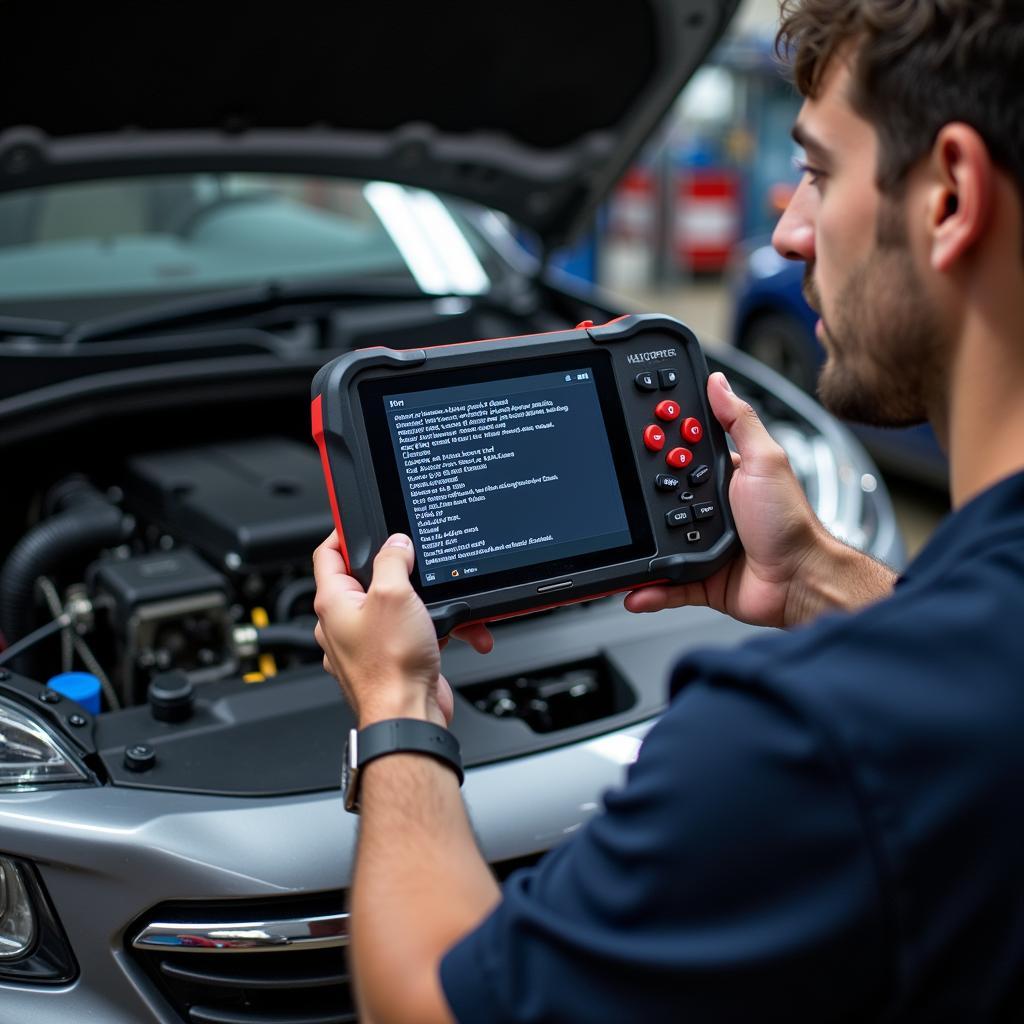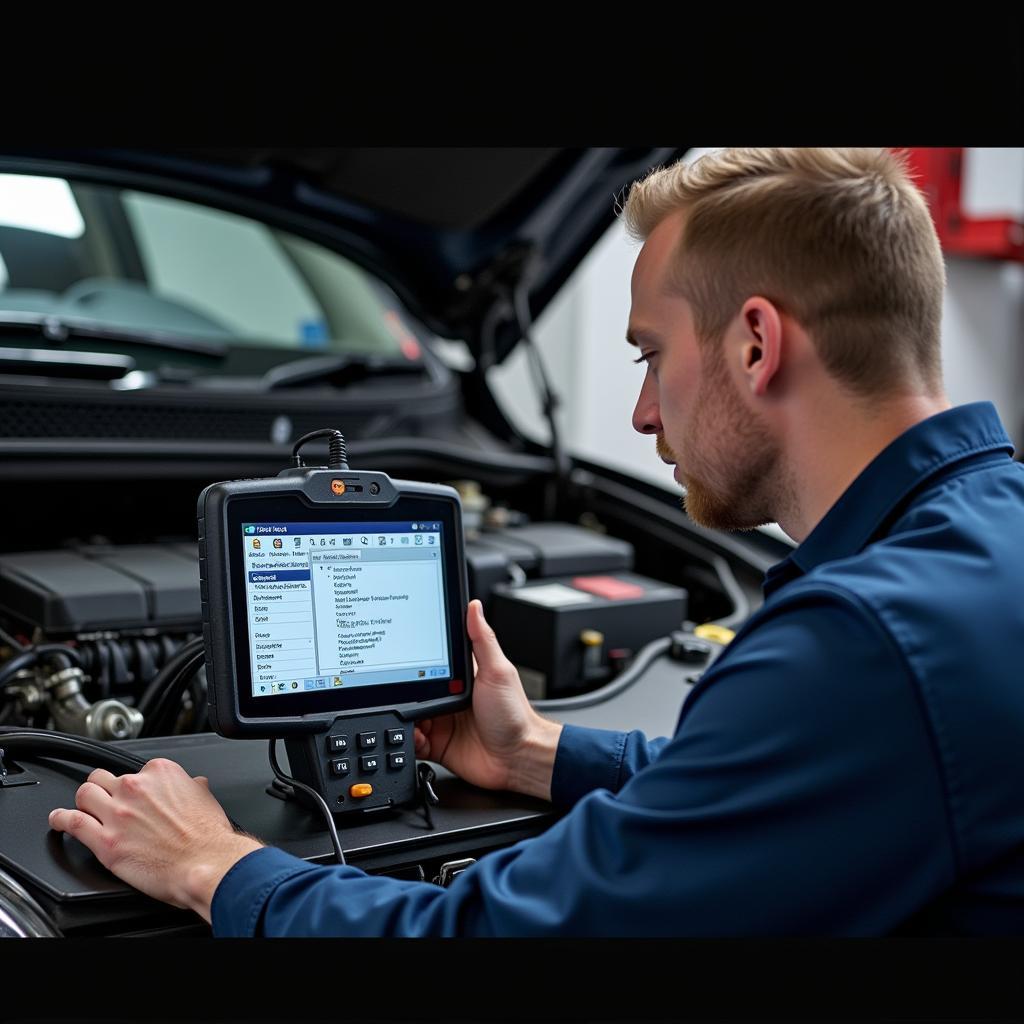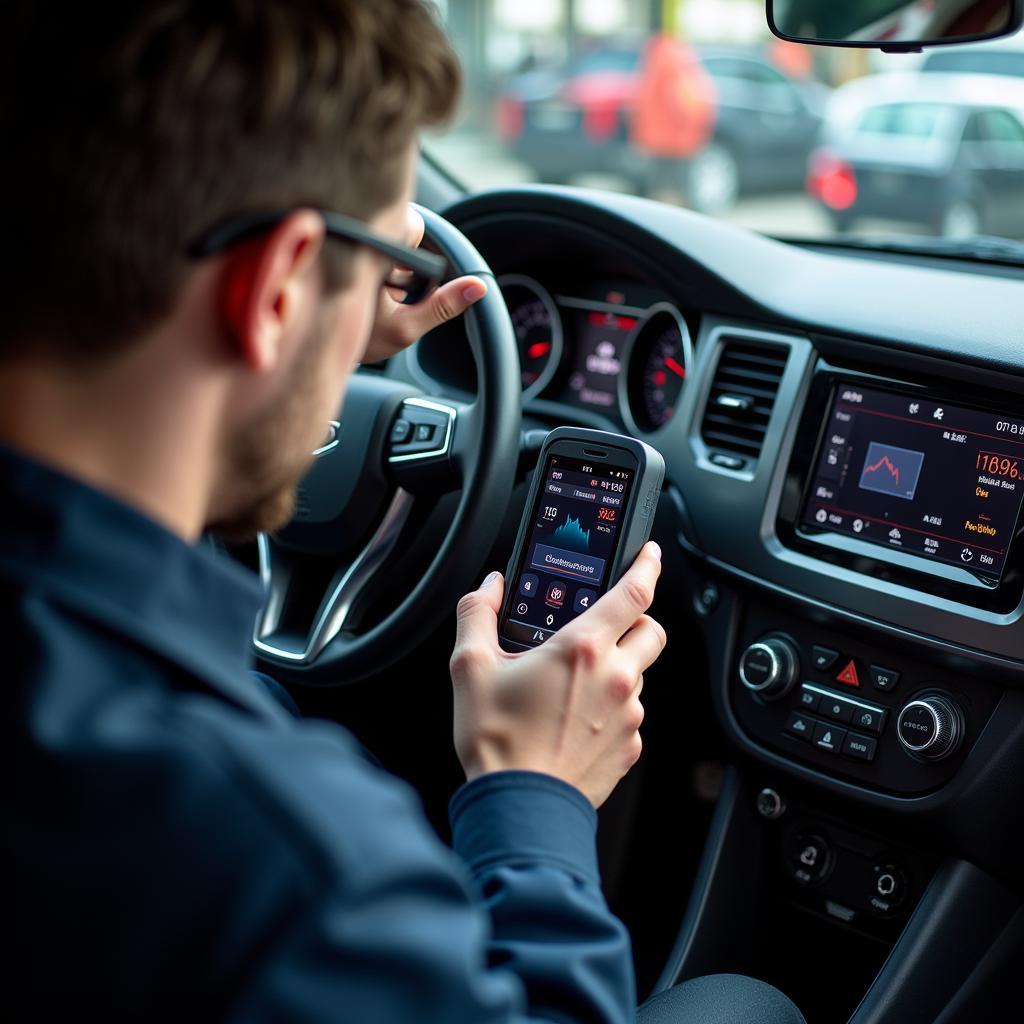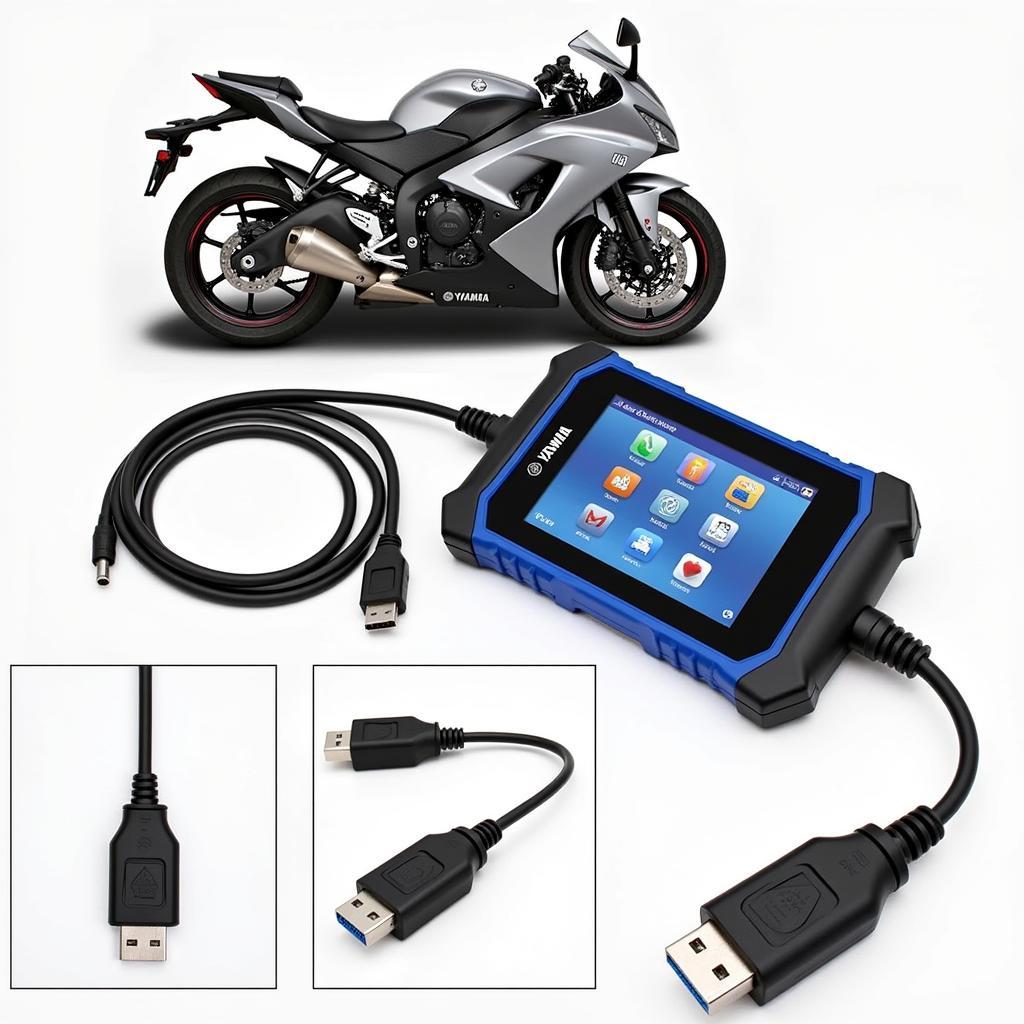Finding the Best Brand Diagnostic Tool can be a daunting task, especially with the overwhelming number of options available in the market. Whether you’re a seasoned mechanic or a car enthusiast looking to do some DIY repairs, having the right diagnostic tool can save you time, money, and a whole lot of frustration. This comprehensive guide will walk you through everything you need to know about choosing the best brand diagnostic tool for your needs.
 Mechanic using a diagnostic tool
Mechanic using a diagnostic tool
Why You Need a Diagnostic Tool
Modern vehicles are complex machines with intricate electronic systems. When a problem arises, it’s no longer a matter of simply looking under the hood and identifying the issue visually. Diagnostic tools have become essential for understanding what’s going on inside your car’s computer system.
These tools can read and interpret error codes, monitor live data from various sensors, and even perform specific functions like resetting the service light or programming keys. Whether you’re dealing with engine problems, transmission issues, or airbag malfunctions, a diagnostic tool can help pinpoint the root cause.
Factors to Consider When Choosing a Diagnostic Tool
The “best” diagnostic tool doesn’t necessarily mean the most expensive one. It’s about finding the one that best suits your specific needs and budget. Here are some key factors to consider:
1. Vehicle Compatibility
Not all diagnostic tools are compatible with all car makes and models. Some tools are designed for specific brands, while others offer broader coverage. Before you invest in a diagnostic tool, ensure it’s compatible with the vehicles you’ll be working on. If you work with a variety of cars, opt for a tool with wider compatibility.
2. Functionality
Diagnostic tools come with varying levels of functionality. Some offer basic code reading and clearing, while others provide advanced features like bi-directional control, live data streaming, and special functions. Consider the tasks you’ll be performing and choose a tool that offers the necessary features.
3. User Interface
The user interface should be intuitive and easy to navigate, even for beginners. Look for tools with a clear display, logical menu structure, and easy-to-understand terminology. A user-friendly interface can make the diagnostic process much smoother.
4. Software Updates
The automotive industry constantly evolves, with new car models and technologies emerging regularly. Choose a diagnostic tool from a reputable brand that provides regular software updates to ensure compatibility with the latest vehicles and technologies.
5. Budget
Diagnostic tools range in price from affordable DIY options to professional-grade tools that can cost thousands of dollars. Determine your budget and look for the best value within your price range. Remember, an expensive tool isn’t necessarily the “best” if it offers features you don’t need.
Types of Diagnostic Tools
There are various types of diagnostic tools available, each with its strengths and limitations:
1. OBD2 Scanners: These are basic scanners that connect to the vehicle’s OBD2 port and can read and clear basic engine-related error codes. They are affordable and suitable for DIYers and basic troubleshooting.
2. Code Readers: Similar to OBD2 scanners, code readers offer slightly more information, such as code definitions and pending codes. They are still relatively basic but can provide more insight into potential issues.
3. Professional Scan Tools: These are advanced tools used by professional mechanics and workshops. They offer a wide range of features, including live data streaming, bi-directional control, special functions, and extensive code libraries. They can be expensive but are essential for comprehensive diagnostics and repairs.
 A professional mechanic using a scan tool to diagnose a car.
A professional mechanic using a scan tool to diagnose a car.
Tips for Using a Diagnostic Tool
Here are some tips for using a diagnostic tool effectively:
- Consult the vehicle’s service manual: Always refer to the vehicle’s service manual for specific instructions and precautions.
- Clear codes before and after repairs: Clear the error codes before making any repairs and after completing them to ensure the issue is resolved.
- Use live data to monitor sensor readings: Live data can provide valuable insights into how the vehicle’s systems are performing in real-time.
- Record error codes and freeze frame data: Note down the error codes and freeze frame data for future reference.
- Update the tool’s software regularly: Regular software updates ensure compatibility with the latest vehicles and technologies.
Top Diagnostic Tool Brands
Several reputable brands consistently deliver high-quality diagnostic tools:
- Autel: Autel offers a wide range of diagnostic tools for DIYers and professionals, known for their user-friendly interface and advanced features.
- Launch: Launch is another popular brand that provides affordable yet powerful diagnostic tools with extensive vehicle coverage.
- BlueDriver: BlueDriver specializes in Bluetooth-enabled diagnostic tools that work with smartphones and tablets, offering a convenient and portable solution.
FAQs
Q: What is the difference between an OBD2 scanner and a code reader?
A: An OBD2 scanner primarily focuses on reading and clearing basic engine-related error codes, while a code reader can also provide code definitions and pending codes.
Q: Do I need a professional scan tool if I’m a DIYer?
A: While a professional scan tool offers advanced features, it might not be necessary for basic DIY repairs. An OBD2 scanner or code reader can be sufficient for basic troubleshooting.
Q: Can I use a diagnostic tool to program keys?
A: Some diagnostic tools offer key programming functions, but not all. Check the tool’s specifications to confirm if it supports this feature.
Q: How often should I update my diagnostic tool’s software?
A: It’s recommended to update the software at least once a year or whenever a new update is available to ensure compatibility with the latest vehicles and technologies.
Conclusion
Choosing the best brand diagnostic tool is crucial for efficient and accurate vehicle diagnostics and repairs. By considering factors like vehicle compatibility, functionality, user interface, software updates, and budget, you can find the perfect tool to meet your specific needs. Whether you’re a professional mechanic or a car enthusiast, having the right diagnostic tool can empower you to tackle automotive issues with confidence.
For personalized recommendations and assistance in choosing the best diagnostic tool, contact the experts at ScanToolUS at +1 (641) 206-8880 or visit our office at 1615 S Laramie Ave, Cicero, IL 60804, USA.




Pingback: Best Professional Car Diagnostic Tool DIY: A Comprehensive Guide - Car Scan Tool